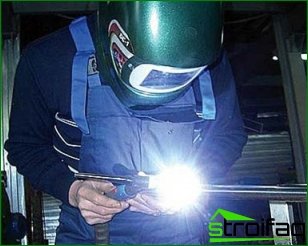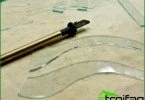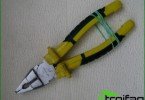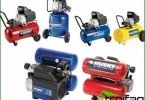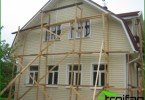Welding in comparison with other connection methods provides the following advantages: 1. Metal saving due to the full use of the working sections of the elements in the connecting nodes of welded structures; giving structures a more appropriate shape in accordance with current loads; a sharp decrease in the weight of the connecting elements in the welded nodes; the use of thinner structures, the lack of metal consumption for sprues and profits, reducing scrap and allowances for machining when replacing castings by welding.
In welded structures, the weight of the weld metal is usually from 1 to 2%, while in riveted, the weight of rivets and scarves is at least 4% of the weight of the product. Welding gives up to 25% of metal savings compared to riveting, compared with casting, metal savings are achieved: when replacing steel casting by welding up to 25-30%, when replacing cast iron by welding steel, up to 50-60%.
Welding in comparison with other connection methods provides the following advantages: 1. Metal saving due to the full use of the working sections of the elements in the connecting nodes of welded structures; giving structures a more appropriate shape in accordance with current loads; a sharp decrease in the weight of the connecting elements in the welded nodes; the use of thinner structures, the lack of metal consumption for sprues and profits, reducing scrap and allowances for machining when replacing castings by welding.In welded structures, the weight of the weld metal is usually from 1 to 2%, while in riveted, the weight of rivets and scarves is at least 4% of the weight of the product. Welding gives up to 25% of metal savings compared to riveting, compared with casting, metal savings are achieved: when replacing steel casting by welding up to 25-30%, when replacing cast iron by welding steel, up to 50-60%.
The use of welding in building construction reduces the weight of steel structures by 15%, facilitates the manufacture and increases the rigidity of the entire structure. In the construction of blast furnaces, the use of welding instead of riveting saves from 12 to 15% of metal, in the constructions of truss trusses, 10-20%, in the designs of cranes -15-20%.
2. Reducing the time of work and reducing the cost of manufacturing structures by reducing metal consumption and reducing the complexity of the work. So, for example, the construction of large blast furnaces at metallurgical plants welding of the furnace casing from steel sheets by electroslag method is carried out in 1/2 month. Manual welding of such a casing takes more than a month; and riveting – 7-9 months.
It is advantageous to use welding in individual and small-scale production, as this can be done with simpler and cheaper fixtures and technological equipment.
3. The possibility of manufacturing products of complex shape by welding them from separate stamped or cast elements instead of forging or casting the product as a whole. Such structures are called stamped or welded cast, respectively, and are widely used in the automotive industry, aircraft manufacturing, car building and other fields..
The use of such structures saves metal and labor. Using welding, it is possible to manufacture parts from metal that has undergone various preliminary processing, for example, welding rolled profiles with stamped, cast or forged blanks. Heterogeneous metals can also be welded: stainless steels with carbon, copper with steel, etc..
In the manufacture of complex structures, the use of welding instead of forging and casting gives a great economic effect. For example, labor productivity in the manufacture of welded structures is 2 times higher than cast and forged-stamped, and working conditions are much better. Capital investments per ton of welded structures are 1.5-2 times less, and the cost is 1.3-1.6 times lower than in foundry. Reducing weight, increasing the reliability and durability of products.
4. Cheaper technological equipment. Welding equipment is relatively uncomplicated, relatively cheap and highly efficient. This reduces capital costs for the construction of metal processing plants and accelerates their commissioning..
5. Facilitation of complex mechanization of mass production of the same type of welded products, the possibility of creating in-line production with 100% mechanization and automation of the production cycle, which dramatically increases the removal of products from a unit of the production area of the workshop.
6. The possibility of widespread use in welded constructions of progressive modern types of materials: high-strength steels, bent lightweight profiles, multilayer sheet metal, light alloys, ultra-pure metals, etc..
7. Facilitation of the manufacture of microminiature units and parts in the production of certain types of products – semiconductor devices, etc..
8. The possibility of widespread use of welding, surfacing and cutting during repairs, where these methods of metal processing make it possible to quickly and cost-effectively restore worn-out, failed equipment and destroyed structures.
9. Tightness and reliability of welded joints.
10. Reducing industrial noise and improving working conditions in the shops.
